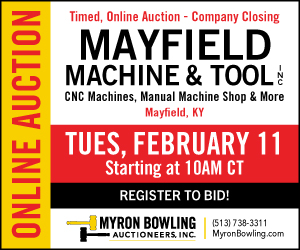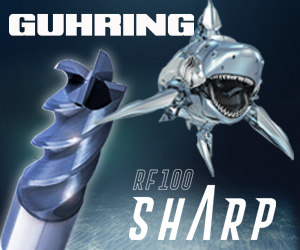
Everyone’s talking about it – the fourth industrial revolution. Rollomatic S.A., based in Le Landeron, Switzerland, is one of the companies setting a course for an interconnected future for machinery. After all, although precision is still a top priority for Rollomatic customers, aspects such as monitoring of machinery and production processes from anywhere in the world are growing more important by the day.
Imagine being able to call up the status of a particular grinding machine while it is in operation and making sure that it is running smoothly from any computer connected to the internet or company network. As nice as that sounds and as often as the “Industry 4.0” label appears all over the place, it is rare for true interconnectivity to have actually arrived at any company. Rollomatic wants to demonstrate, at least for tool grinding, how easy it is to set up communication between the Rollomatic RMonitor and RConnect systems.
RMonitor is intelligent monitoring software that can be used to check the efficiency of means of production. The system visualizes the current status and historical performance of machinery and reports any forthcoming preventative maintenance, for example. This enables resources to be managed more efficiently overall. The RConnect software links to an ERP system, i.e. via OPC, and offers the opportunity to analyze production statistics and plan processes.
New LaserSmart 501 gives precise shape to PCD
Aluminum and lightweight materials such as CRP and titanium alloys are part of everyday business in the aviation and automotive industries. Tools fitted with PCD or PCBN, and increasingly those with monobloc designs, are especially suited to withstand the abrasiveness of fiber-reinforced plastics and the difficulty of machining tempered steel and other extremely temperature-resistant materials. With the LaserSmart 501, Rollomatic has a suitable machine tool for making PCD and PCBN tools in its line-up. The LaserSmart 501 allows sharp and clearly defined cutting edges to be made.
As Damien Wunderlin, head of marketing and sales at Rollomatic SA, comments: “Whereas in the past, key features of a PCD tool, such as its circular land chip breaker edges, had to be produced on separate machinery after eroding, the new LaserSmart 501 completes the entire process in a single clamp. This saves an enormous amount of time while simultaneously boosting productivity and lasering brings with it many benefits in terms of precision as well. Unlike with eroding, the laser cuts cleanly through the diamond grain and achieves much sharper cutting edges without melting or breakouts.”
In the cutting process, this manifests itself in smoother surfaces thanks to the circular land and orderly chip removal via the corresponding ablation, while effective chipbreakers can be used if necessary for targeted chip control.
Rollomatic has added some major features to the new LaserSmart 501 model that make machining monobloc tools easier. “To do this, we have redesigned the workpiece holder and integrated an automation process. In addition, the Job Manager on the LaserSmart enables different tool geometries to be loaded and lasered without any intervention from the operator. Redesigning some other machine features has also enabled us to enlarge the machining area to allow even greater variety in potential tools,” explains Wunderlin.
Before anything is even laser cut, the tool and all its machining processes can be visualized in a preliminary 3D simulation program. “This simplifies the entire production process and is extremely easy to do for good measure. That means that tool design remains intuitive and doesn’t turn into astrophysics!” stresses Wunderlin.
Six axes create flexibility and can be set up more quickly
The grinding machines from Rollomatic – especially the 6-axis models – have a reputation in the industry for being dependable workhorses for precise standard and specialty tools. Rollomatic offers models such as the GrindSmart 629XS and 629XW. Aspects such as the smart clamping and handling systems mean that Rollomatic tool grinders can also be used to grind inserts. Thanks to the sixth axis, which enables the grinding wheels to be inclined during grinding, the extra axis allows for even larger relief angles and complex tool geometries to be ground. For spherical milling cutters or partial radii, the sixth axis enables the grinding point to remain constant during the relieving operation and offers better surface finish and more accurate geometric precision.
Efficiency and productivity are features that act as benchmarks by which competing tool manufacturers are measured. To overcome these challenges and others, Rollomatic uses various functions to work on setup times for its grinding machines. “For example, we have integrated a self-centering system into the grinding machines, which goes about its work entirely without any adjustment by the operator. Another new development is the addition of extra wheel packs in the wheel changer for the GrindSmart 629XW. After all, having three times as many grinding wheels as before makes process management simpler for users and goes some way to shorten nonproductive time!” says Wunderlin.
Although autonomous driving is slowly coming of age, our industry is one step ahead when it comes to autonomy. Production without operator intervention is already an important part of efficient production at Rollomatic. Particularly in machining processes that are very sensitive to precision, measurements need to be taken constantly. For several years now, Rollomatic grinding machines have come with integrated measuring equipment that provides important data on the success of a grinding process via 3D probing of the tool.
“We’ve now taken it a step further and implemented a contactless method. Without any operator intervention, it measures in the micron range, thereby ensuring the autonomy of the production process and its quality,” explains Wunderlin. The new measurement routines make it possible to compensate even for anomalies triggered by sudden temperature fluctuations or incipient grinding wheel wear.
Elliptical is the new round
If a perfectly round circumference is a major quality feature of shaft-mounted tools, the situation is often somewhat different in the case of stamping and forming tools. “Requests from our customers have shown that demand for elliptical and nonround tools, for example, is growing. That’s why we have integrated the newly patent pending SmartPunch process in our 5-axis ShapeSmart NP5 pinch and peel grinding machine. The 5-axis machine design coupled with this new grinding method help to make it possible to grind nonround punches, threading tools, stamping and forming tools with complex shapes. This opens up all manner of previously inconceivable possibilities for the tool and stamping tool industry,” says Wunderlin.
Related Glossary Terms
- alloys
alloys
Substances having metallic properties and being composed of two or more chemical elements of which at least one is a metal.
- gang cutting ( milling)
gang cutting ( milling)
Machining with several cutters mounted on a single arbor, generally for simultaneous cutting.
- grinding
grinding
Machining operation in which material is removed from the workpiece by a powered abrasive wheel, stone, belt, paste, sheet, compound, slurry, etc. Takes various forms: surface grinding (creates flat and/or squared surfaces); cylindrical grinding (for external cylindrical and tapered shapes, fillets, undercuts, etc.); centerless grinding; chamfering; thread and form grinding; tool and cutter grinding; offhand grinding; lapping and polishing (grinding with extremely fine grits to create ultrasmooth surfaces); honing; and disc grinding.
- grinding machine
grinding machine
Powers a grinding wheel or other abrasive tool for the purpose of removing metal and finishing workpieces to close tolerances. Provides smooth, square, parallel and accurate workpiece surfaces. When ultrasmooth surfaces and finishes on the order of microns are required, lapping and honing machines (precision grinders that run abrasives with extremely fine, uniform grits) are used. In its “finishing” role, the grinder is perhaps the most widely used machine tool. Various styles are available: bench and pedestal grinders for sharpening lathe bits and drills; surface grinders for producing square, parallel, smooth and accurate parts; cylindrical and centerless grinders; center-hole grinders; form grinders; facemill and endmill grinders; gear-cutting grinders; jig grinders; abrasive belt (backstand, swing-frame, belt-roll) grinders; tool and cutter grinders for sharpening and resharpening cutting tools; carbide grinders; hand-held die grinders; and abrasive cutoff saws.
- grinding wheel
grinding wheel
Wheel formed from abrasive material mixed in a suitable matrix. Takes a variety of shapes but falls into two basic categories: one that cuts on its periphery, as in reciprocating grinding, and one that cuts on its side or face, as in tool and cutter grinding.
- land
land
Part of the tool body that remains after the flutes are cut.
- micron
micron
Measure of length that is equal to one-millionth of a meter.
- milling
milling
Machining operation in which metal or other material is removed by applying power to a rotating cutter. In vertical milling, the cutting tool is mounted vertically on the spindle. In horizontal milling, the cutting tool is mounted horizontally, either directly on the spindle or on an arbor. Horizontal milling is further broken down into conventional milling, where the cutter rotates opposite the direction of feed, or “up” into the workpiece; and climb milling, where the cutter rotates in the direction of feed, or “down” into the workpiece. Milling operations include plane or surface milling, endmilling, facemilling, angle milling, form milling and profiling.
- polycrystalline cubic boron nitride ( PCBN)
polycrystalline cubic boron nitride ( PCBN)
Cutting tool material consisting of polycrystalline cubic boron nitride with a metallic or ceramic binder. PCBN is available either as a tip brazed to a carbide insert carrier or as a solid insert. Primarily used for cutting hardened ferrous alloys.
- polycrystalline diamond ( PCD)
polycrystalline diamond ( PCD)
Cutting tool material consisting of natural or synthetic diamond crystals bonded together under high pressure at elevated temperatures. PCD is available as a tip brazed to a carbide insert carrier. Used for machining nonferrous alloys and nonmetallic materials at high cutting speeds.
- relief
relief
Space provided behind the cutting edges to prevent rubbing. Sometimes called primary relief. Secondary relief provides additional space behind primary relief. Relief on end teeth is axial relief; relief on side teeth is peripheral relief.
- threading
threading
Process of both external (e.g., thread milling) and internal (e.g., tapping, thread milling) cutting, turning and rolling of threads into particular material. Standardized specifications are available to determine the desired results of the threading process. Numerous thread-series designations are written for specific applications. Threading often is performed on a lathe. Specifications such as thread height are critical in determining the strength of the threads. The material used is taken into consideration in determining the expected results of any particular application for that threaded piece. In external threading, a calculated depth is required as well as a particular angle to the cut. To perform internal threading, the exact diameter to bore the hole is critical before threading. The threads are distinguished from one another by the amount of tolerance and/or allowance that is specified. See turning.







